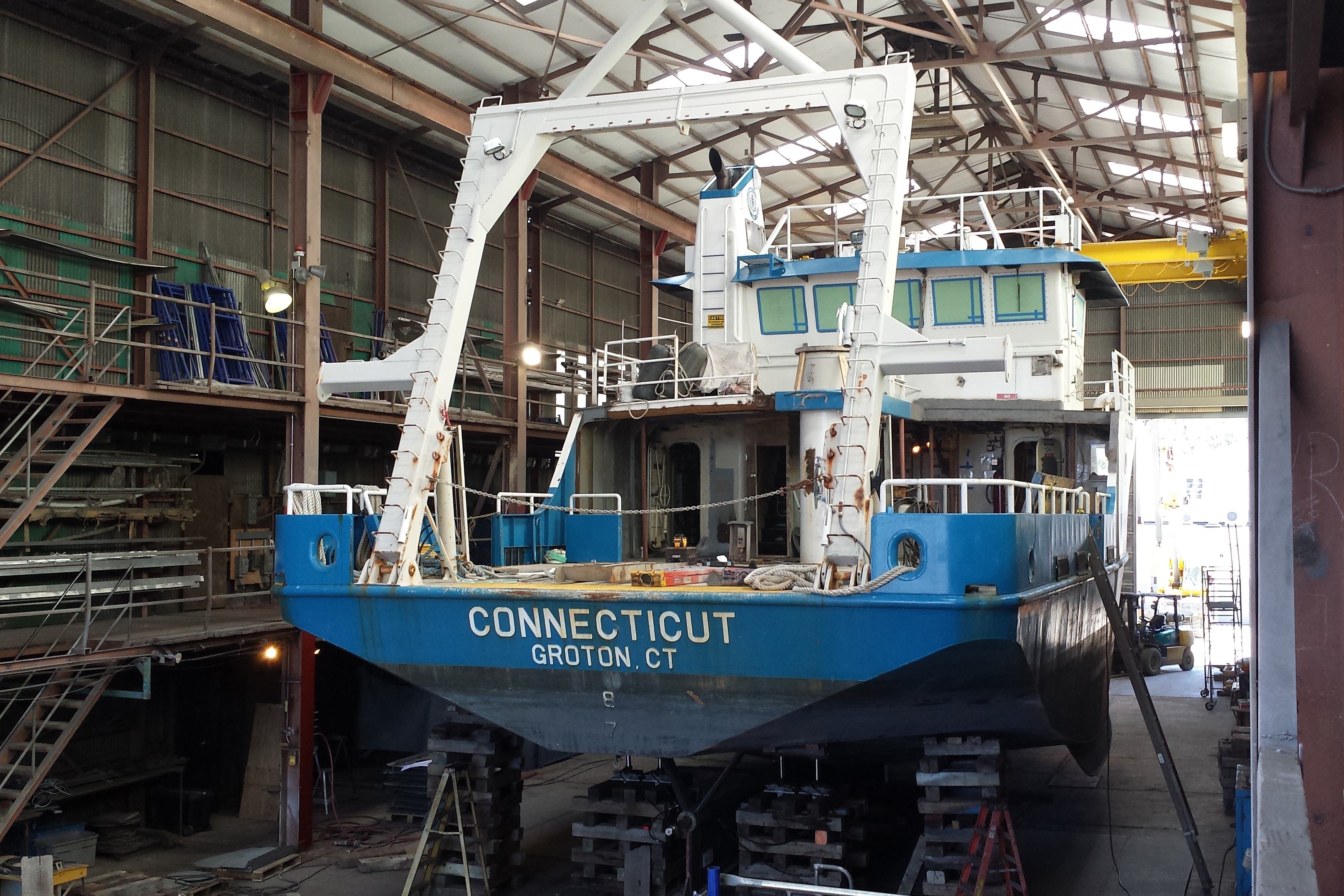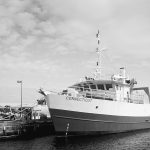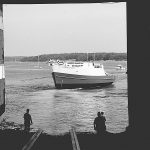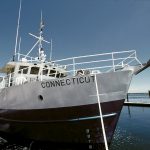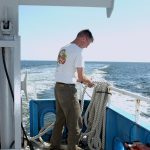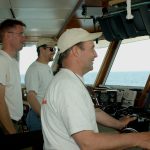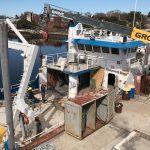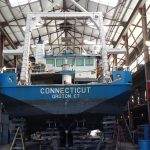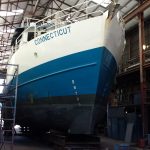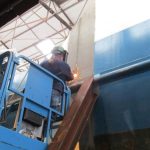UConn’s marine research boat, the Research Vessel Connecticut, is getting a makeover. The updated ship will be capable of sustaining operations around the clock for several weeks at a time.
The R/V Connecticut, the larger of two marine research boats at the Avery Point campus, is now in the shipyard. Work is scheduled to begin later this month, and to be completed by mid-July.
Plans include lengthening the 18-year-old ship from 76 feet to 90 feet; doubling the laboratory space on board; and increasing the number of bunks from 12 to 18. The refurbished vessel will be able to hold 13 researchers and technicians, more than double the seven that are currently allowed on board. In order to lengthen the ship, construction crews will carefully cut it in half, and then weld in the 14-foot section.
The upgraded research vessel will be one of just a few of its kind on the Eastern Seaboard.
Professor James B. Edson, head of the marine sciences department, says the improvements will cause the ship’s research value to skyrocket.
“This will greatly enhance the capabilities of the ship to comfortably support 24/7 research operations for up to several weeks at sea. It will also make it much easier to bring groups of students to sea including overnight educational cruises,” he says. “It will enhance its already excellent reputation within the oceanographic community as a vessel able to deploy a wide variety of buoys, and autonomous and tethered underwater vehicles.”
Over the past 18 years, the R/V Connecticut has been used extensively not only by UConn researchers, but by a variety of different groups and institutions that have chartered it, including the U.S. Navy, the University of Rhode Island, the National Oceanic and Atmospheric Administration, and the U.S. Geological Survey.
The marine sciences department also uses the boat as a teaching tool. “The R/V Connecticut is actively used to bring our undergraduate students to sea as part of our core curriculum,” says Edson. “This provides our students with hands-on experience with sensors, data collection, and data analysis.”
Many of the research projects include graduate students, and there are often opportunities for undergraduate students on the research cruises.
Marine sciences professor James O’Donnell, who specializes in using statistical and mathematical models to predict and analyze the physical processes of water circulation in coastal waters, has used the vessel frequently. His research allows organizations such as the Navy to more accurately determine water conditions for submarine and ship operations. If these organizations can predict water conditions, then they have a greater chance of successful and smooth missions.
O’Donnell has been one of the biggest proponents of lengthening the R/V Connecticut. He says it will enable him to provide more experiences to a larger number of students.
UConn marine sciences and geography professor Heidi Dierssen used the R/V Connecticut for a 2012 project looking for “red tides” in the Long Island Sound. Red tides are plankton that bloom so quickly they create toxins that are harmful to humans and marine life.
By using satellite imagery and water testing, Dierssen was able to create a different way of studying and identifying “red tides.” She says this wouldn’t have been possible without the use of UConn’s research vessels, which allowed her and her team to travel to Long Island Sound, identify the spot by collecting samples, and test the water for plankton using the ship’s microscopes.
Researchers hope that once the renovations are complete, the increase in the time the ship can stay on the water will offer more opportunities for further discoveries.
Says Edson, “The upgrade will make the R/V Connecticut a special asset to the oceanographic fleet along the eastern seaboard and extremely attractive for research.”
